Who
Jeremy Clark, Founder of New England Ski History and contributor to New England Ski Industry News
Recorded on
December 6, 2022
About New England Ski History
New England Ski History has two main components:
1) NewEnglandSkiHistory.com
This is HQ. Each New England state gets a landing page, which in turn links out to profiles of all its active ski areas, its major lost ski areas, and many planned-but-never built ski areas:
There are also pages devoted to expansions (both realized and cancelled), lifts (sorted by type, brand, or year installed or removed), and trailmaps. One of my favorite features is the inventory of historic lift ticket and season pass prices (select the drop-downs at the top to change the state or season).
The site, like its subject matter, is a little retro, but the information is, in general, very current. For New England podcast prep, this site is gold.
2) NewEnglandSkiIndustry.com
This is a news site, focused always and only on New England. The subject matter is expansive and often esoteric: updates on chairlift construction or obscure ski area re-openings – topics few other outlets would cover, but of clear interest to the typical Storm reader. I never send out a news update without checking this site for tidbits that I would otherwise miss. Clark recently launched a Substack newsletter that pushes these headlines right to your email inbox - subscribe below:
Why I interviewed him
There has been organized skiing in New England for at least 100 years. Rolling terrain, half-year-long winters, and population density made that inevitable. As soon as machines tiptoed their way into Earth’s timeline, New Englanders began flinging them up hillsides. Some stuck. Most didn’t. Today, New England skiing is a couple dozen monsters, a few dozen locals, and a scattering of surface-lift bumps where a lift ticket costs less than a pack of smokes.
As rich as this history is, there are few reliable sources of historical information on New England skiing. New England Lost Ski Areas Project has documented more than 600 lost ski areas across the region – the site’s founder, Jeremy Davis, was one of my first guests on The Storm Skiing Podcast back in 2019 (it’s still one of my favorite episodes). The New England Ski Museum has put together timelines on the development of lifts, snowmaking, grooming, and more. But current information on still-operating ski areas is hard to find outside of the ski area sites themselves, and even those are often unhelpful for anything more in-depth than pulling up the current trailmap.
New England Ski History hosts the best and most comprehensive library of information not just on the region’s major lost ski areas, but on the 90-ish active ones. One thing that has frustrated me in the internet age is how difficult it can be to find what should be the most basic information. What year did Jay Peak open? What is the vertical drop of Veterans Memorial ski hill in New Hampshire? Why did Mt. Tom, Massachusetts, close despite its popularity?
For the past 15 to 20 years, Jeremy Clark, who as a tech-brained 1990s teenager built Berkshire East’s first website, has been organizing all of this information in one place. The site is free for all, but it has been invaluable to me as a reliable information source on all things New England skiing. I never knew who ran it – unlike The Storm, there is no name adjacent to the masthead - until late last year, when I fired off an email to the anonymous address posted on the site. Clark answered right away, and here we are.
What we talked about
New England snowmaking superpowers; New England Ski History HQ; the rotation theory of skiing; unsung but interesting small ski areas; growing up at atmospheric and primitive Berkshire East; the power plant that changed weather in the entire valley; Roy Schaefer, savior of Berkshire East; building the ski area’s first website for $180 in the ‘90s; the annual continent-wide hunt for used equipment; the evolution of Berkshire East from backwater to four-seasons resort that’s a top-10 draw on the Indy Pass; the 100-year-old but little-known Eaglebrook ski area; Proctor Academy ski area; “I realized I’d be able to ski a lot more if I didn’t work in the ski business”; how and why Jeremy created New England Ski History; building the site’s tremendous ski area profiles; the value of showing up; the potential to scale the site up; assembling the jigsaw puzzle of a decades-long ski-area history; “the goal of the site is to get the history right”; sorting out Berkshire East’s complicated history; the role of the interstates in building New England skiing; keeping the site updated; New England Ski Industry News and its corresponding Substack newsletter; why Clark shut down the New England Ski History Facebook page, even though it had approximately 10,000 followers; lost ski areas; the devastating loss of Mt. Tom and why it will likely never return; the value of small ski areas; Brodie; “intermediate terrain is great for business”; the rise and fall of Ski Blandford; Woodbury, Connecticut and whether it could ever come back; assessing Saddleback two years in; the attempted comebacks of Granite Gorge and Tenney; what it would take to make The Balsams happen; what it takes to bring a lost ski area back from the dead; the drama at Big Squaw and whether the upper mountain will ever re-open; whether Big Squaw’s minimalist model would work to keep other lost ski areas alive; potential lost ski areas that could re-emerge from the dead; Mt. Prospect; the comeback potential of Plymouth Ski Area in Vermont; New England expansion plans; Ragged; the good and bad of multi-mountain passes; what skiing and smoking have in common; reaction to Pacific Group Resorts purchasing Jay Peak; Vail and New Hampshire – “I hope they’ve learned that New Hampshire is a lot different than Vermont”; and upgrades at Attitash.
Why I thought that now was a good time for this interview
One of The Storm’s animating principles is the celebration of excellence. Who is doing things right in the ski world? Sometimes that’s Jay Peak and Whitefish middle-fingering astronomical big-mountain walk-up lift ticket prices. Sometimes that’s Alterra assembling the greatest ski area lineup in the history of multi-mountain passes. And sometimes it’s someone who has quietly built a damn good website that enriches the world of lift-served skiing in a way that no one else has managed to do. That’s why I’ve hosted the owners of Lift Blog, Real Skiers, and Seniors Skiing on the pod. And that’s why I invited Clark onto the show.
Industrialized skiing is evolving at an insane pace. It was just six years ago that Vail purchased its first New England ski area. At the time – 2017 – there was no Ikon Pass, no Alterra Mountain Company, no Indy Pass, no Covid, no eight-place chairlifts (in America). The more debris there is blowing around in the storm, the harder it can be to remember the world before it floated in. We all need centering mechanisms, places where we can draw context and anchor our understandings. For New England skiing – one of the most vibrant wintertime cultures on the planet – there is really no better or more comprehensive source than New England Ski History. As we all try to make sense of our ever-changing megapass-dominated ski world of 2023 together, I thought that it would be valuable to point out that the region’s past, at least, was already capably organized.
What I got wrong
I said that I couldn’t think of any New England ski areas that remain under their original ownership, and Clark quickly pointed out that Pats Peak has been under the stewardship of the Patenaude family since it opened in 1962, which of course: I had just discussed that very point with Pats Peak GM Kris Blomback on the podcast a few months before.
I said offhand that Killington and Sugarbush’s max 2022-23 lift tickets were in the $180 range, and that I would confirm those prices. Both are hitting closer to $200.
Podcast Notes
We discussed quite a few active-but-lesser-known ski areas on the podcast – I’ve linked to their New England Ski History profile pages below:
Eaglebrook, a 440-vertical-footer in Massachusetts served by a double chair. This is the second-oldest ski area in the country, and serves the students at the private Eaglebrook School. I just love their trailmap:
Proctor is another private-academy bump, a 436-footer in Andover, New Hampshire. This one has occasionally opened to the public in the past, but I haven’t been able to find any information on open ski days since the pandemic hit in 2020.
We talked a lot about Berkshire East, which Clark worked at for more than a decade:
Clark referenced a cancelled but partially built expansion for the ski area in the 1970s – read the full history here.
Clark designed Berkshire East’s first website. The earliest screenshot I could find was from April 18, 1998, and it’s a beauty:
We also discussed several lost ski areas, including:
Chickley Alps, Massachusetts rose 300 vertical feet and operated from 1937 to 1979.
Mt. Tom, Massachusetts, a fairly successful ski area whose sudden closing in 1998 is still a bit mystifying. This 680-vertical-foot ski area ran on four double chairs and a collection of surface lifts.
Brodie, which the owners of neighboring Jiminy Peak bought and shuttered around the beginning of the century.
I asked Clark which lost ski areas had the best chance of a comeback:
Monteau in northern New Hampshire, which rose 650 vertical feet and was served by a double chair and some surface lifts, and has been closed since 1990.
Farr’s Hill, Vermont. This 160-foot bump has been closed since the 1960s. A couple years back, however, a new owner purchased a used T-bar from Oak Mountain, New York, with the intention of re-opening the ski area. I haven’t heard any updates in a while, and the ski area’s Facebook page is now inactive.
Plymouth Notch/Roundtop/Bear Creek – this is the most recent lost chairlift-served ski area in Vermont. It operated as a private club as recently as 2018, and has a fairly extensive trail network. The problem? It’s sandwiched between Killington and Okemo.
Clark and I discussed the upcoming expansion plans at:
Waterville Valley – the resort hopes to finally link the village to the ski area with a gondola up the back side of Green Peak:
Sunday River, where the recently opened Jordan 8 chairlift will act as the gateway to the massive Western Reserve territory, which could double the size of the resort. Unfortunately, there are no renderings of the expansion to share yet.
Sugarloaf – West Mountain, which is scheduled to open in early 2024 (I did a full write-up on this one a few weeks back):
We also discussed abandoned or suspended potential expansions at:
Ragged Mountain – Pinnacle Peak, where the ski area cut trails years ago; owner Pacific Group Resorts confirmed to me last year that they do not intend to proceed with the expansion.
Killington – the proposed but cancelled Parker’s Gore project would have added 1,500 acres with a sustained 3,000 foot vertical drop, served by up to 10 lifts.
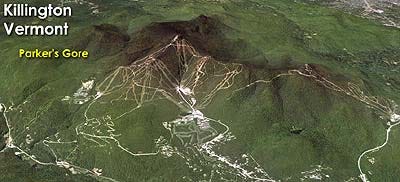
Cranmore – Black Cap, which would boost the ski area’s vertical drop from 1,200 to 1,800 feet.

Bolton Valley, which was originally proposed as a far larger resort than the three-peak operation you can ski today. Clark said he found this masterplan, which shows chairlifts running all the way down to Interstate 89 – 1,800 feet below where the current Vista base area sits:

We discussed the Hall double chair that once acted as a redundant lift to the Attitash Summit Triple, which Peak Resorts removed without explanation around 2018. This turned out to be the worst possible decision, as the triple then conked out for months at the end of the 2018-19 ski season. Vail Resorts will finally replace the triple with a high-speed quad this summer, making the decision to remove the double moot. It’s the Top Notch Double on the map below:
The Storm publishes year-round, and guarantees 100 articles per year. This is article 7/100 in 2023, and number 393 since launching on Oct. 13, 2019. Want to send feedback? Reply to this email and I will answer (unless you sound insane, or, more likely, I just get busy). You can also email skiing@substack.com.






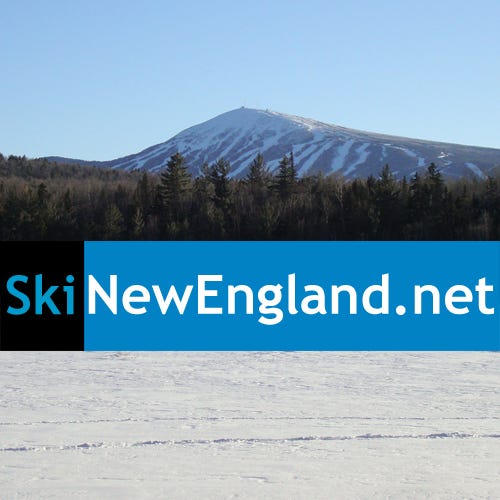


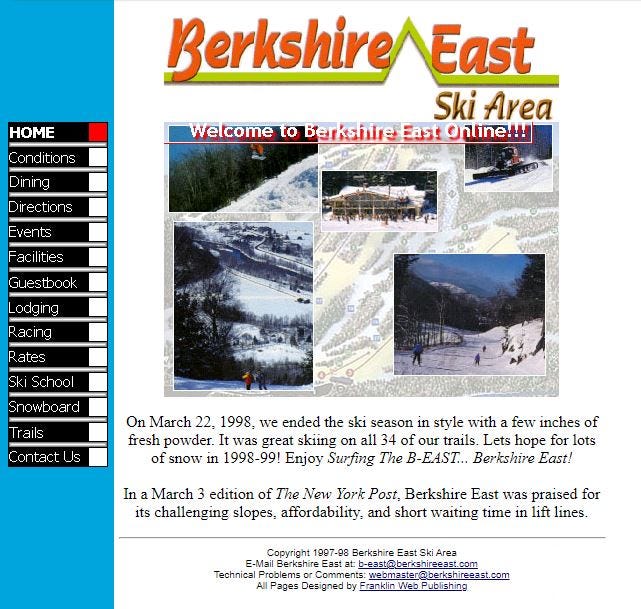




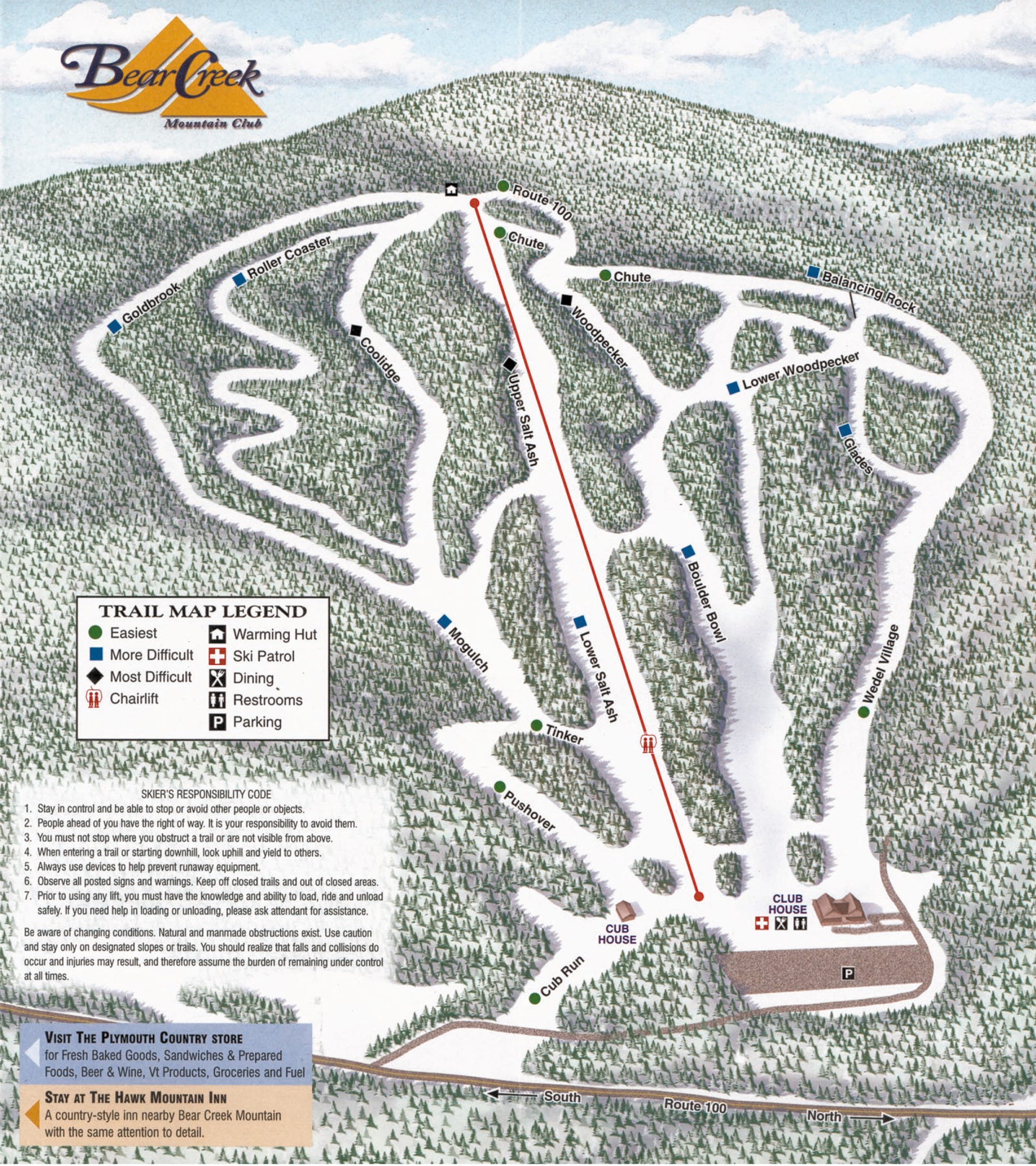
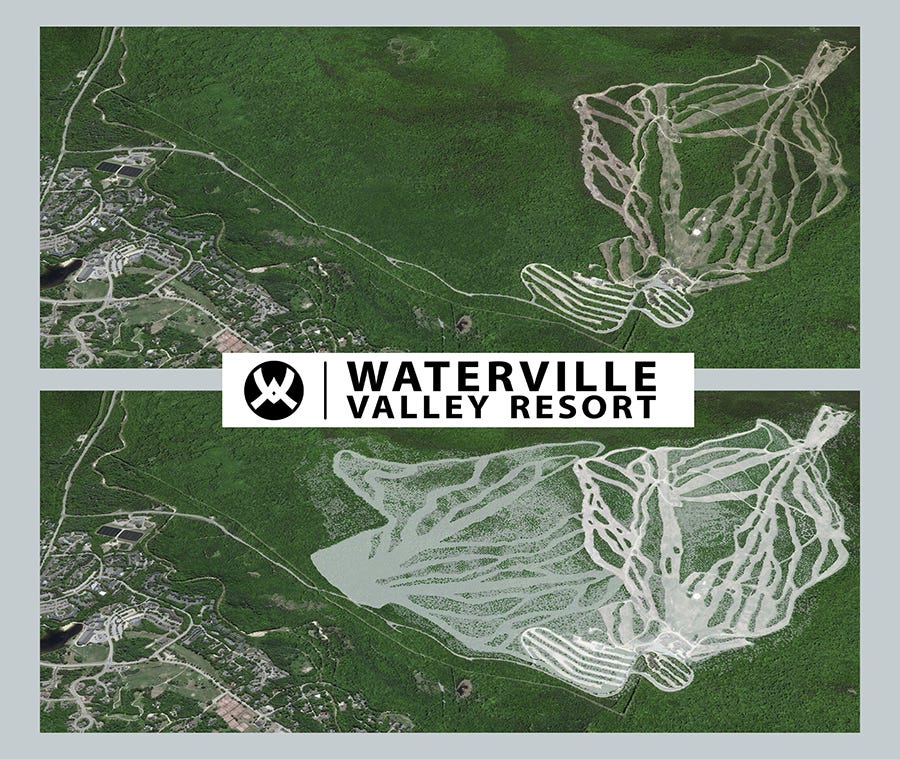
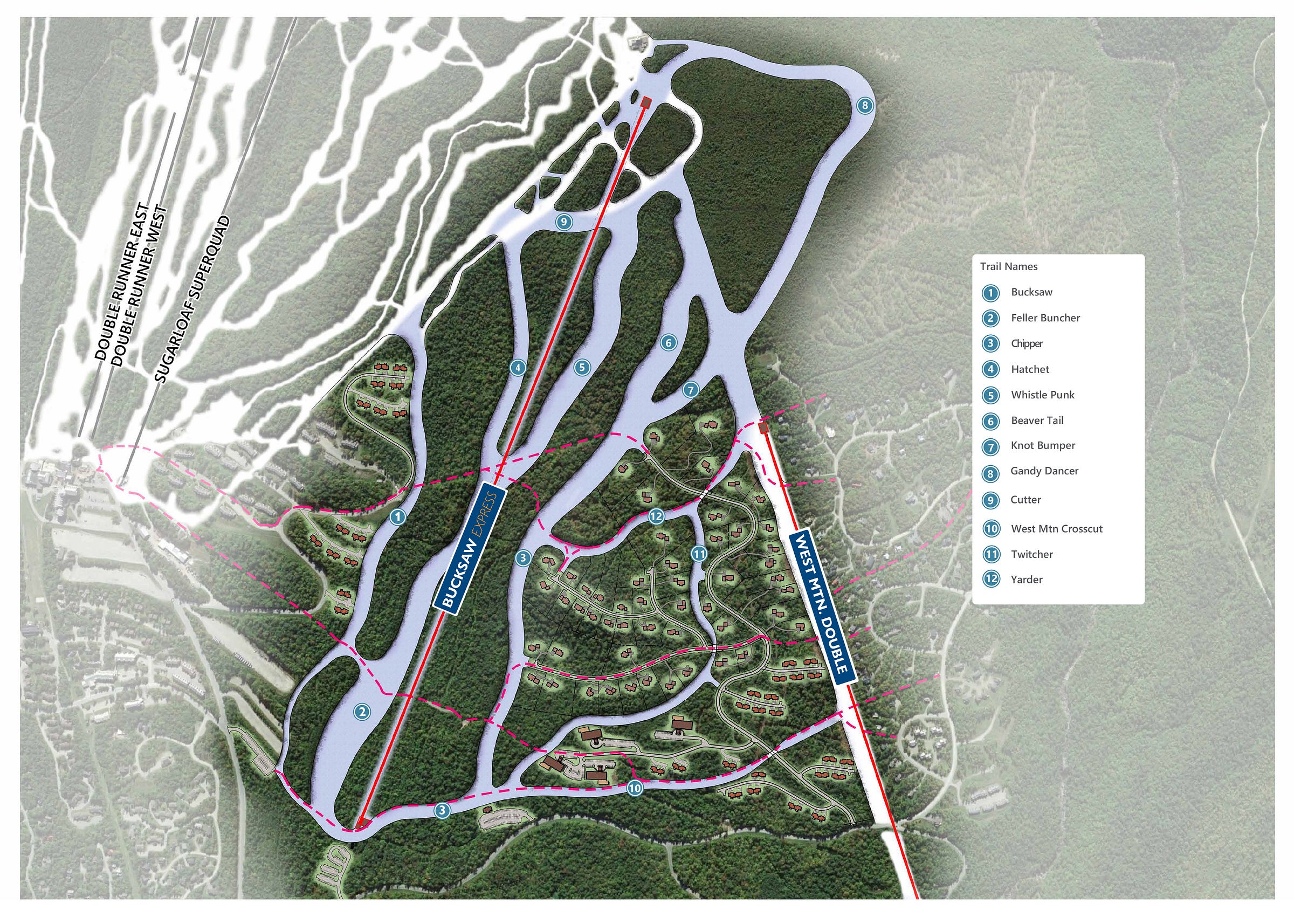
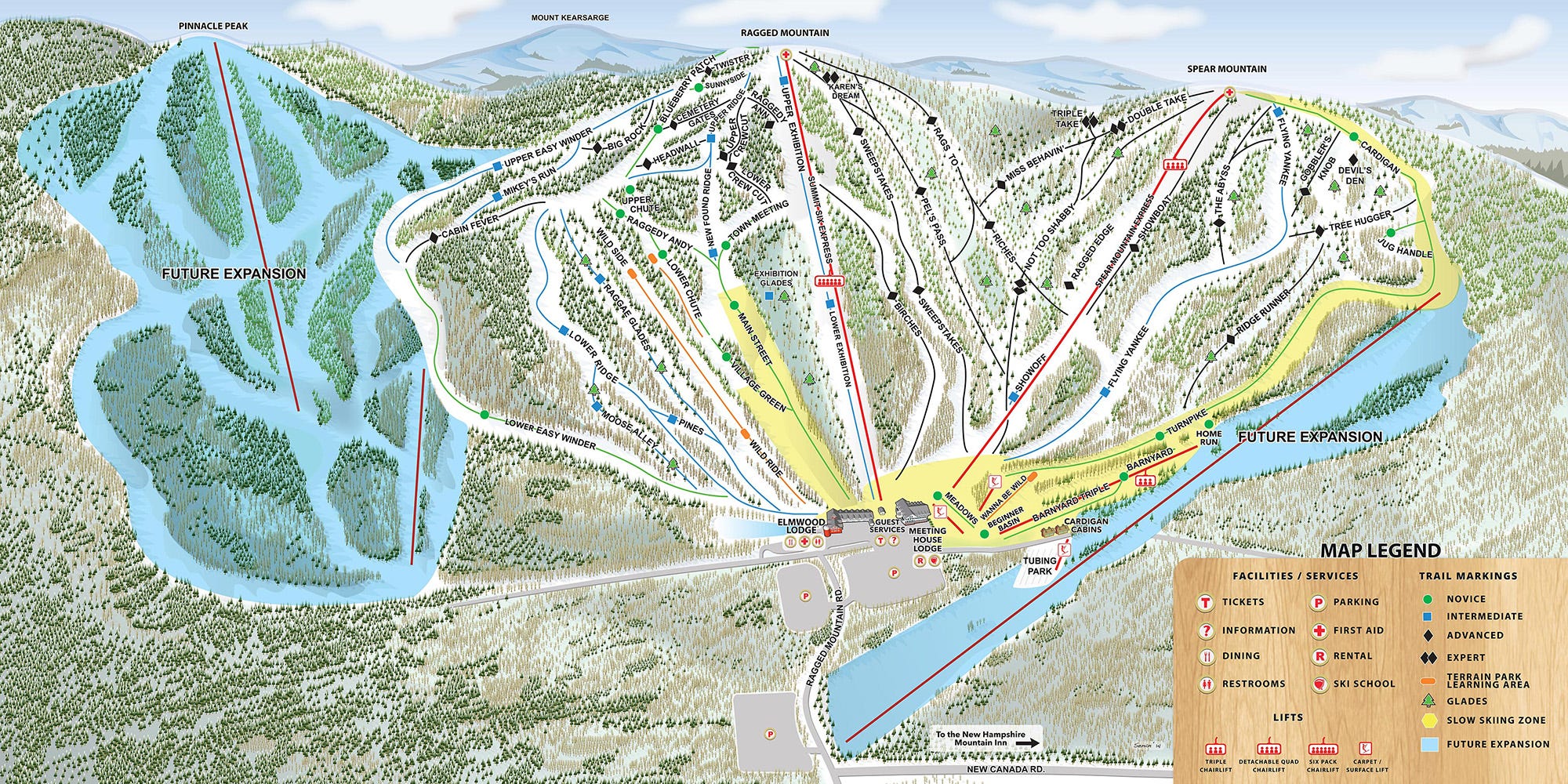
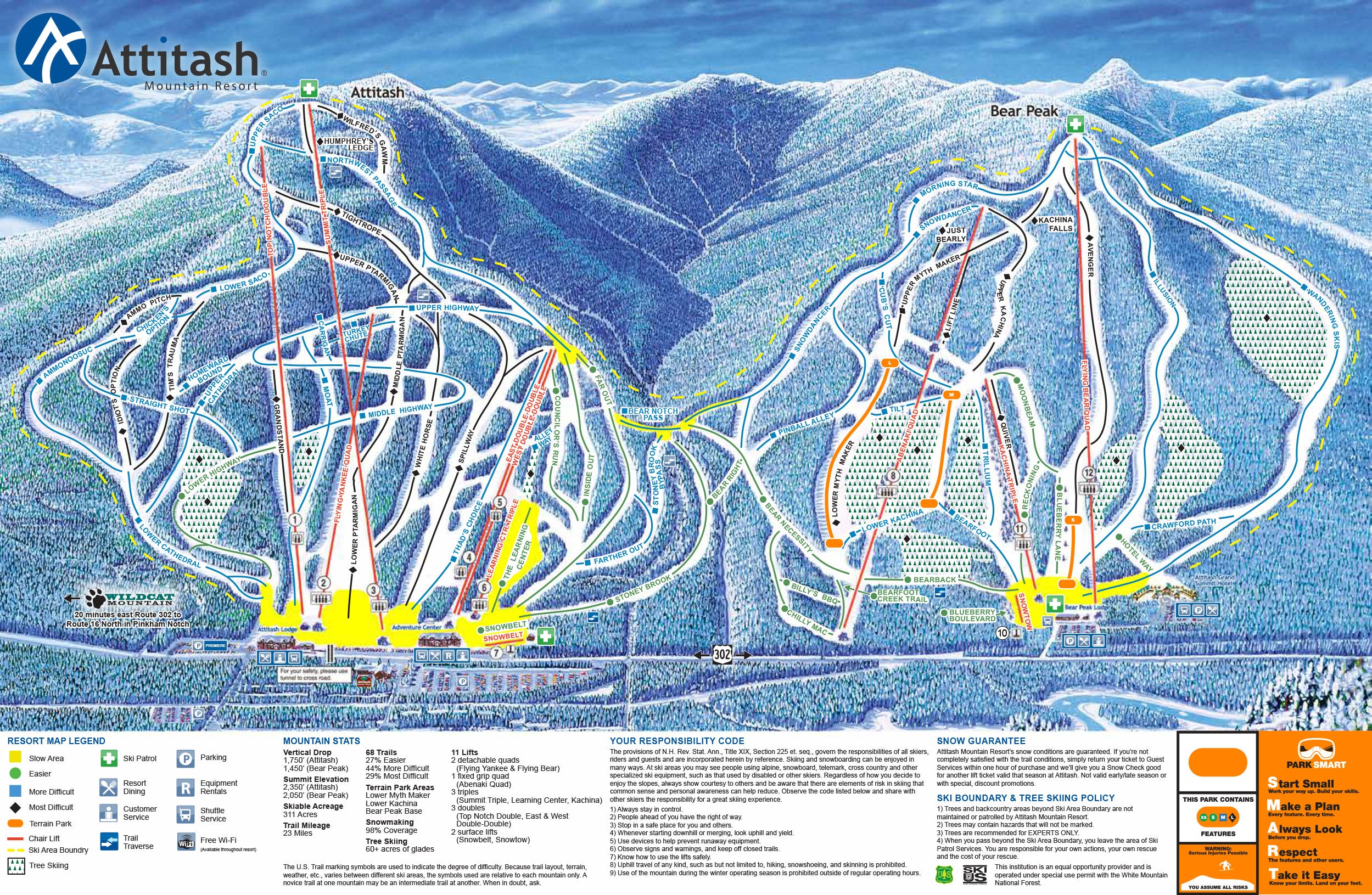






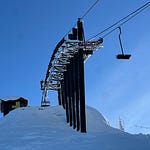


Share this post